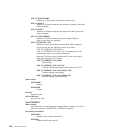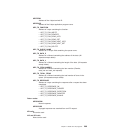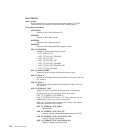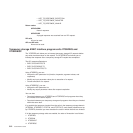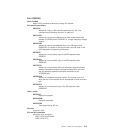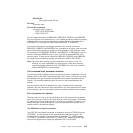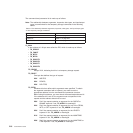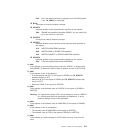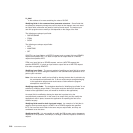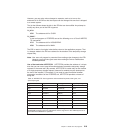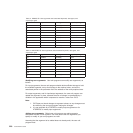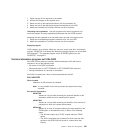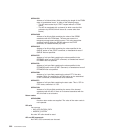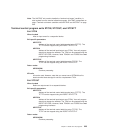
The command-level parameter list is made up as follows.
Note: The relationship between arguments, keywords, data types, and input/output
types is summarized for the temporary storage commands in the following
tables:
Table 9. The relationship between arguments, keywords, data types, and input/output types
for the temporary storage commands
Command See
WRITEQ TS Table 10 on page 219
READQ TS Table 11 on page 220
DELETEQ TS Table 12 on page 220
TS_ADDR0
is the address of a 9-byte area called the EID, which is made up as follows:
v TS_GROUP
v TS_FUNCT
v TS_BITS1
v TS_BITS2
v TS_EIDOPT5
v TS_EIDOPT6
v TS_EIDOPT7
v TS_EIDOPT8
TS_GROUP
Always X'0A', indicating that this is a temporary storage request.
TS_FUNCT
One byte that defines the type of request:
X'02' WRITEQ
X'04' READQ
X'06' DELETEQ
TS_BITS1
Existence bits that define which arguments were specified. To obtain
the argument associated with a keyword, you need to use the
appropriate address from the command-level parameter structure.
Before using this address, you must check the associated existence bit.
If the existence bit is set off, the argument was not specified in the
request and the address should not be used.
X'80' Set if the request contains an argument for the QUEUE or
QNAME keyword. If set, TS_ADDR1 is meaningful.
X'40' Set if the request contains an argument for any of the FROM,
INTO, or SET keywords. If set, TS_ADDR2 is meaningful.
X'20' Set if the request contains an argument for the LENGTH
keyword. If set, TS_ADDR3 is meaningful.
X'10' Set if the request contains an argument for the NUMITEMS
keyword. If set, TS_ADDR4 is meaningful.
X'08' Set if the request contains an argument for the NUMITEMS or
ITEM keyword. If set, TS_ADDR5 is meaningful.
216 Customization Guide



